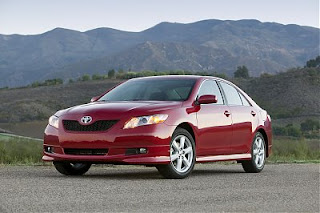Toyota May Move Some Camry Production to Indiana Plant
 LeftLaneNews reported yesterday that in the face of full size pickup and SUV demand falling off a cliff, plus the minivan market shrinking, Toyota is considering a plan to use some of its underutilized Princeton, Indiana truck plant (which currently builds the Tundra, Sequoia, and Sienna) to produce Camry sedans. The Tundra’s sales were down 34.0% in May (up 6.8% year to date because last year was the ramp-up of the new model); the Sequoia was up 24% year to date (but is an all-new vehicle this year), and the Sienna is down 6.2% year to date.
LeftLaneNews reported yesterday that in the face of full size pickup and SUV demand falling off a cliff, plus the minivan market shrinking, Toyota is considering a plan to use some of its underutilized Princeton, Indiana truck plant (which currently builds the Tundra, Sequoia, and Sienna) to produce Camry sedans. The Tundra’s sales were down 34.0% in May (up 6.8% year to date because last year was the ramp-up of the new model); the Sequoia was up 24% year to date (but is an all-new vehicle this year), and the Sienna is down 6.2% year to date.
There had been a lot of speculation about how Toyota would deal with slowing demand for its large vehicles. The company announced previously that it would export some of the Indiana-built vehicles to overseas markets. Toyota has previously taken several other steps such as slowing down the production line speed and reassigning employees to quality improvement teams to avoid layoffs; shifting some Camry production from overseas facilities into the less-expensive US plants. (Last year, 89% of the Camrys that Toyota sold were built in the US; in 2008 so far, 98% of them were built in the US). It appears that Toyota is selling as many US-built Camrys as it can produce between its Georgetown, Kentucky plant and the dedicated production line that Subaru is operating for Toyota in Lafayette, Indiana.
The Camry’s sales success is something of a surprise to me; the car’s reputation was built on quality, value, and reliability. The current model has had some reliability concerns; the quality of the interior materials has been questioned by numerous reviewers (I wasn’t terribly impressed by it in the Camry Hybrid I tested, and while the car is still in the same price range as some of its competitors, Toyota’s de-contenting is beginning to show in the interior. It has become clear to me that Toyota has become overly concerned about the bottom line and less concerned about using top-shelf materials throughout their vehicles. Comparing the interior in an older Toyota design such as the Sienna to newer designs such as the Sequoia and Camry, the material quality is far better in the older designs than in the newer ones.
However, it’s unclear to me if the Camry’s relatively flat sales this year (while its closest competitors, the Accord and Altima, were both up big-time this year (the Accord up 8% year to date and the Altima up 17% year to date) are a result of stronger competition or production constraints. Presumably, if Toyota was able to build 11% of its US-sold Camrys in Japan last year, it should still be able to use Japanese facilities to fulfill any unanticipated US demand this year, unless doing so in a weak dollar environment would kill the car’s profitability, since vehicles exported from Japan would be more expensive this year than they were last year.
Giving Toyota the benefit of the doubt that production capacity constraints are what is causing the Camry’s sales to remain flat in an otherwise growing market, this possible production shift sounds like a win for all involved; Toyota gets more Camry production, the Princeton plant gets more vehicles to build, and Toyota should theoretically then be able to sell more cars.




